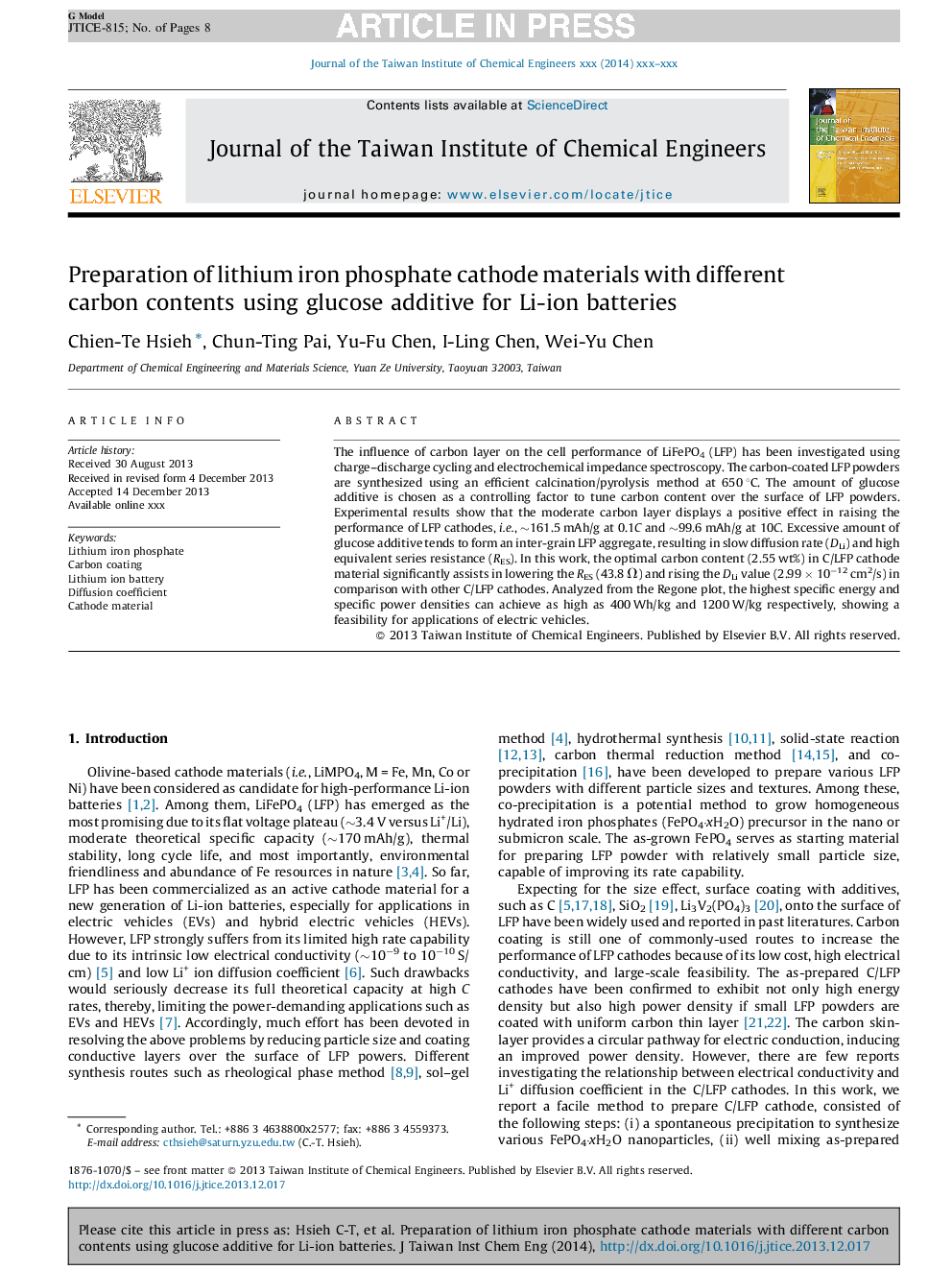| Article ID | Journal | Published Year | Pages | File Type |
|---|---|---|---|---|
| 690906 | Journal of the Taiwan Institute of Chemical Engineers | 2014 | 8 Pages |
Abstract
The influence of carbon layer on the cell performance of LiFePO4 (LFP) has been investigated using charge-discharge cycling and electrochemical impedance spectroscopy. The carbon-coated LFP powders are synthesized using an efficient calcination/pyrolysis method at 650 °C. The amount of glucose additive is chosen as a controlling factor to tune carbon content over the surface of LFP powders. Experimental results show that the moderate carbon layer displays a positive effect in raising the performance of LFP cathodes, i.e., â¼161.5 mAh/g at 0.1C and â¼99.6 mAh/g at 10C. Excessive amount of glucose additive tends to form an inter-grain LFP aggregate, resulting in slow diffusion rate (DLi) and high equivalent series resistance (RES). In this work, the optimal carbon content (2.55 wt%) in C/LFP cathode material significantly assists in lowering the RES (43.8 Ω) and rising the DLi value (2.99 Ã 10â12 cm2/s) in comparison with other C/LFP cathodes. Analyzed from the Regone plot, the highest specific energy and specific power densities can achieve as high as 400 Wh/kg and 1200 W/kg respectively, showing a feasibility for applications of electric vehicles.
Keywords
Related Topics
Physical Sciences and Engineering
Chemical Engineering
Process Chemistry and Technology
Authors
Chien-Te Hsieh, Chun-Ting Pai, Yu-Fu Chen, I-Ling Chen, Wei-Yu Chen,
